Works
Med-AR in Sweden
Designing and evaluating an intelligent augmented reality system for assisting older adults’ medication management
Portfolio
Story Backgroud
The majority of older adults use an increasing number of medications as they
become older. 25% to 40% of adults aged 65 years or older are prescribed at
least 5 medications. Management of adherence, which is the process of supporting
and monitoring patients’ adherence to medication is a challenge for older adults
because of their impairments of sensation, perception, and cognition.
This is
the story of how the team and I created a possible and
innovative augmented
reality (AR) system to support the daily task of managing
medication adherence
by using pill dispensers for older adults in Sweden.
*Med is an abbreviation of medication and “with” in English and Swedish
respectively.
*This project result has been published in the Journal of Cognitive System
Research.
*The content was partially reinterpreted to help reading.
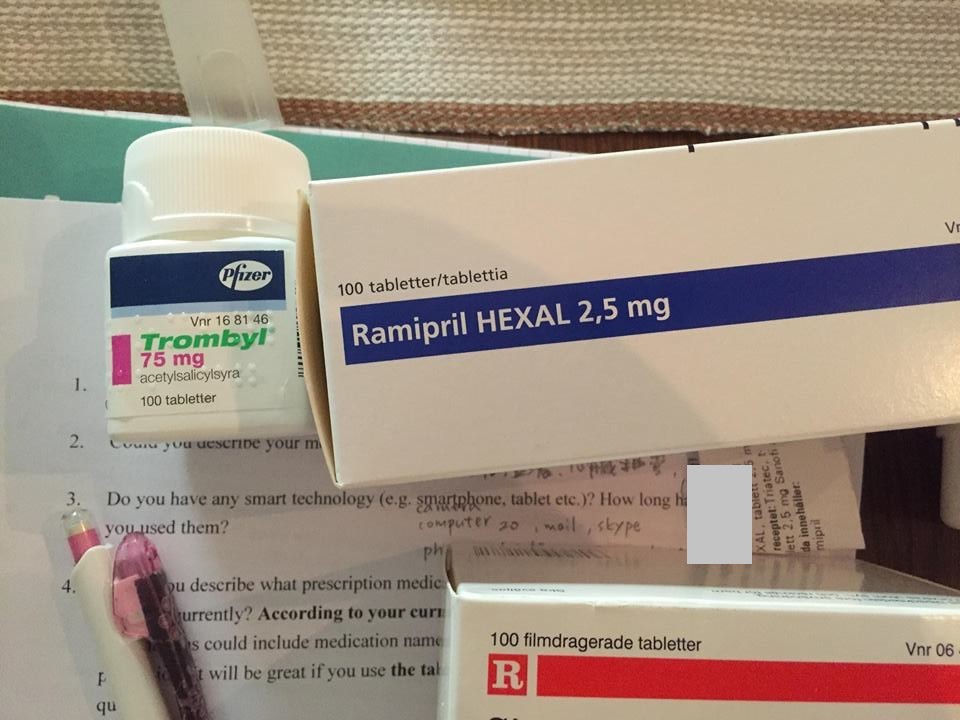
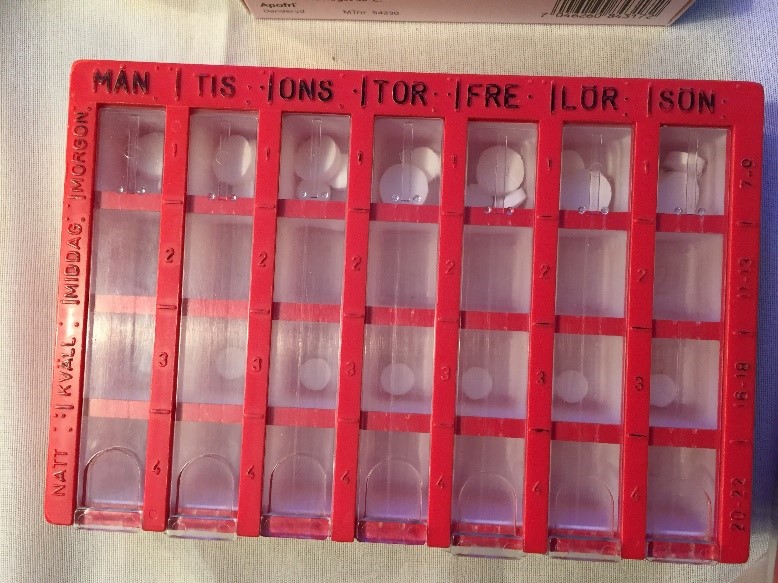
My Role
I enlisted the cooperation with the research group on
Interactive Intelligent
Systems in the Department of Computer Science at Umeå University in
Sweden.
In
Sweden, I led the UX work, conducting context inquiry,
designing iterative
prototypes, and managing user tests. I cooperated with system engineers from
different countries, Swedish field experts and target users between November
2017 and March 2018.
The Challenge
Exploring target users and stakeholders’ needs for medication management with using pillboxes.
Many different kinds of technology have been developed to support older adults’ medication management and improve their medication adherence. However, the intervention technology is unlikely to increase older adults’ medication adherence including correct medication distribution and the evidence is limited. The reason is the designs of technology are technology-driven and lack of situated exploring. Therefore, the team decided to conduct context inquiry. I visited the homebound elderly and interviewed them and field experts to collect and analyze their needs. Afterwards, I shared findings with the team to design the application.
Designing the application with using limited resources and time.
This is a bottom-up project, which means the team had to coordinate the existing resources to make a quick development and test. The users and field experts participated in each design and evaluation process.
Conducting a theoretical-based structure of design
The project was planned in an academic unit so the theoretical-based structure was necessary. In addition, a solid cognitive and artificial intelligence foundation supported the scientific validity of the project and the application. The design process based on Activity theory and formal argumentation theory, which provided the structures of behavior analysis of the medication distributing and reasoning of the application respectively.
The Approach
Deep in the literature
An efficient literature review gave an overall view of design possibilities. I reviewed the literature systematically from device and co-design perspectives. I found:
-
1. Possible technology
AR can be an efficient technology to improve older adults’ daily independency and control since AR can be located and used in their familiar, daily environments. In addition, the projection-based AR application is especially appropriate to support the medication distribution for older adults because users can practice with their hands the actions and the unlimited display size enables users who have poor vision to read relative instruction clearly.
2. Successful design factors
The keys to succeeding and to avoiding the failures of past eHealth/AI efforts are user-centered design, evaluation from the beginning, and interdisciplinary collaboration with medical experts.
3. The process of using participatory design to design an AI system
Creating design idea, concretizing idea, and evaluating the result.
Stand in users’ shoes
Besides the inputs of literature review, we used participatory design methods to
comprehensively understand the process of using pill dispensers to manage
medications in older adults. In addition, this method provided the users and
stakeholders to present their needs and opinions.
The Discovery
Certain requirements of medication information
The participating older adults relied on medication dispensers to manage
their medications. When older adults distribute their medications to the
dispensers, they need certain information about the medications and
prescriptions, which is the same information that caregivers need.
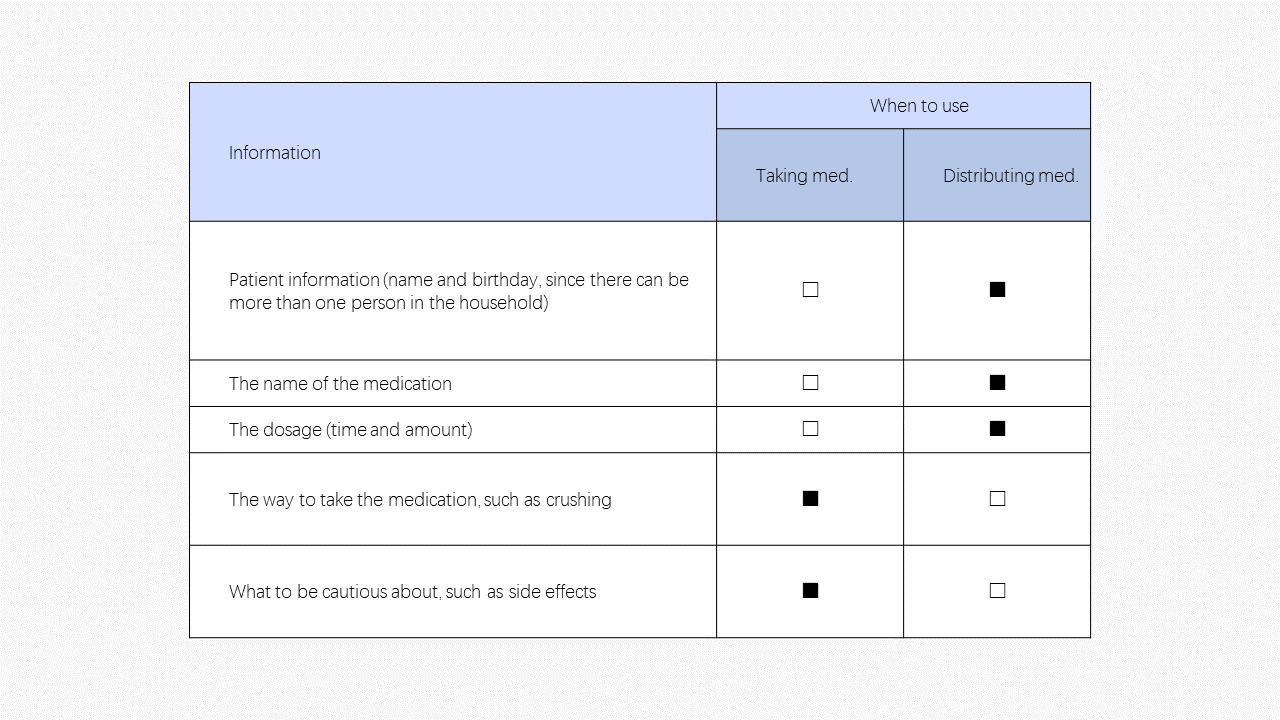
Multiple sources of medication information
The different sources of information were viewed as sources of stress and
confusion, for they caused worries that the patients might miss something
important. In addition, sometimes the medication provided might vary in
appearance from time to time because the healthcare system provides the
cheapest
brand, which changes over time. Therefore, older adults relies on the label
of
medication instruction on medication packages to distribute medication.
However,
the font size of the medication instruction labels were too small to read
easily.
“What is said on the label is really important. Even though the doctor
said
but you didn’t listen to him, maybe you were thinking about what to do
next
and you missed some information what doctor said that was not on the
label.”
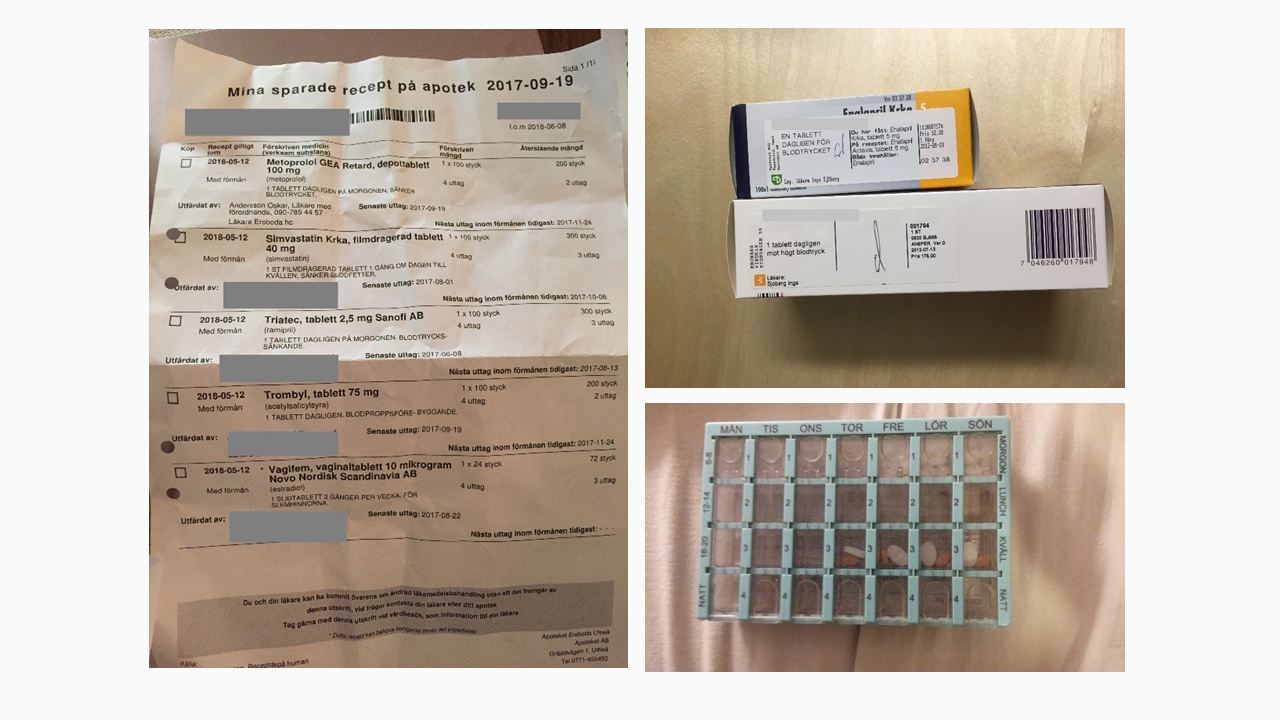
Storing medications in certain cabinets
Older adults removed the medications from the cabinets and then
distributed
the medications to the dispensers. However, medications in cabinets may
belong to different family members who live together and/or visit
occasionally. Moreover, the older adults mentioned that some medications
that had not recently been used were stored in the cabinets as well.
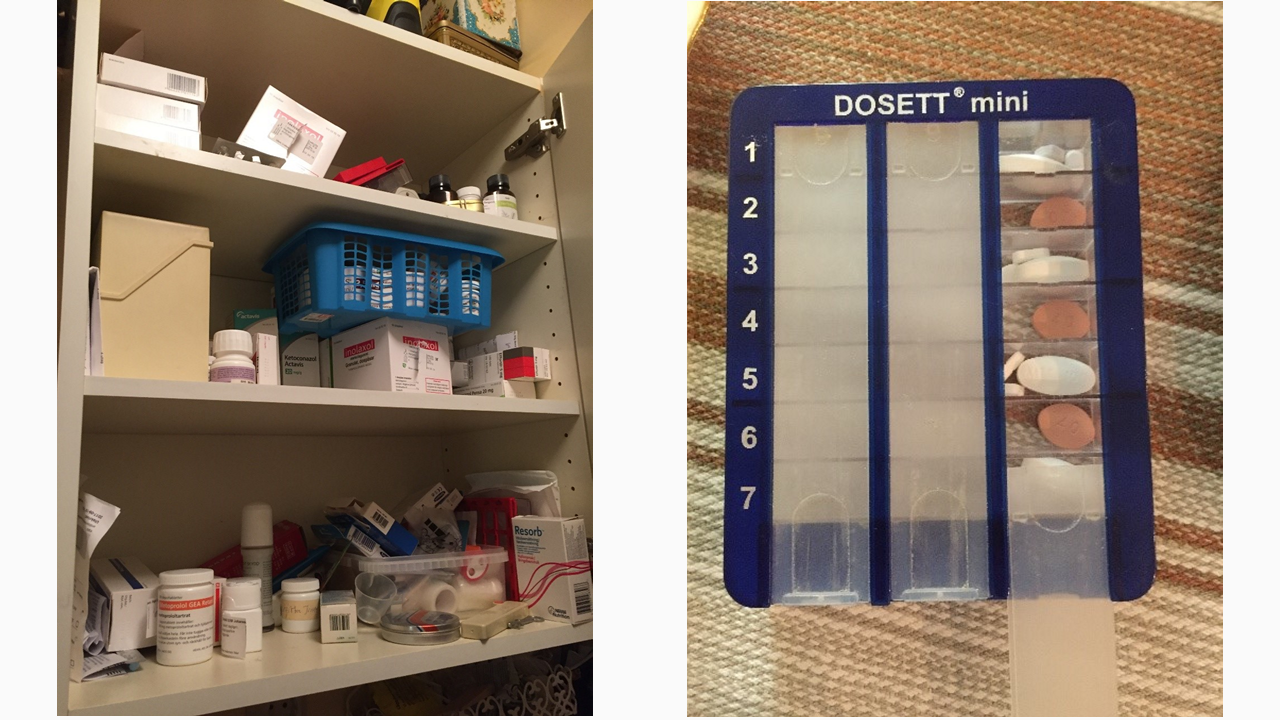
The Vision
The Design for home-situated medication adherence improvement
The home-situated medication management is individually different
from
personal prescriptions, the numbers of family members and the
environments of storing medications. Therefore, we proposed the
following goals of the MED-AR system to improve medication
adherence:
- Personalised support
- Transparent information with source information
- The provision of information both when the medicine is distributed and when it is taken
- Context awareness(e.g., information about whether some medicine is old or prescribed to another person in the household)
- Coordination between human and Intelligent Assistive Systems (IAS) support
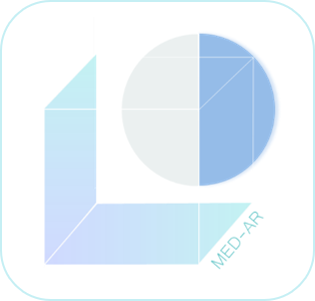
The Framework
The framework of designing the MED-AR based on participatory design with three steps: creating design idea, concretizing idea, evaluating the result. Following the process, we sharpened and integrated our ideas about how to design the interaction and the AI system. Moreover, we used different methods to collect ideas and data in the three steps respectively.
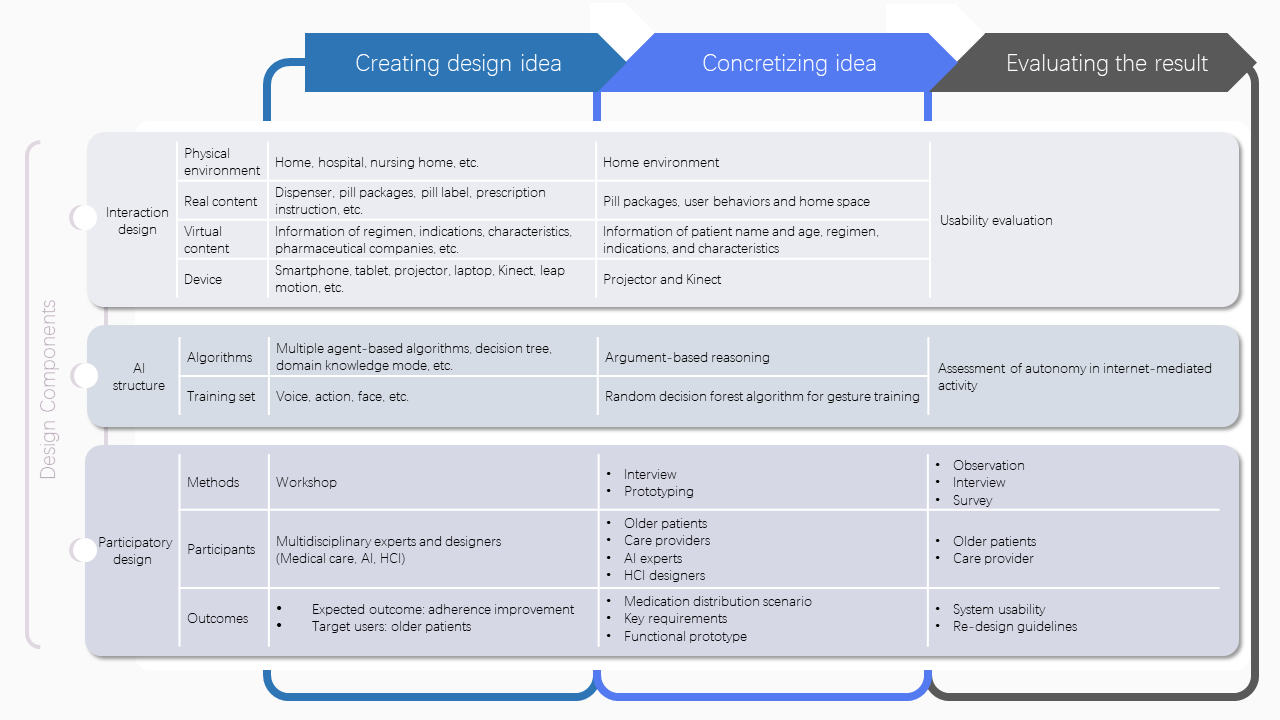
Workshop: Collecting multidisciplinary perspectives
To clarify the possible using scenarios, potential users, and system building, multidisciplinary experts and designers (Medical care, AI, HCI) gathered to discuss the ideas. We summarized that the outcome of the system was to improve users’ medication adherence, which was supporting them to distribute medications correctly and the main target users are older patients.
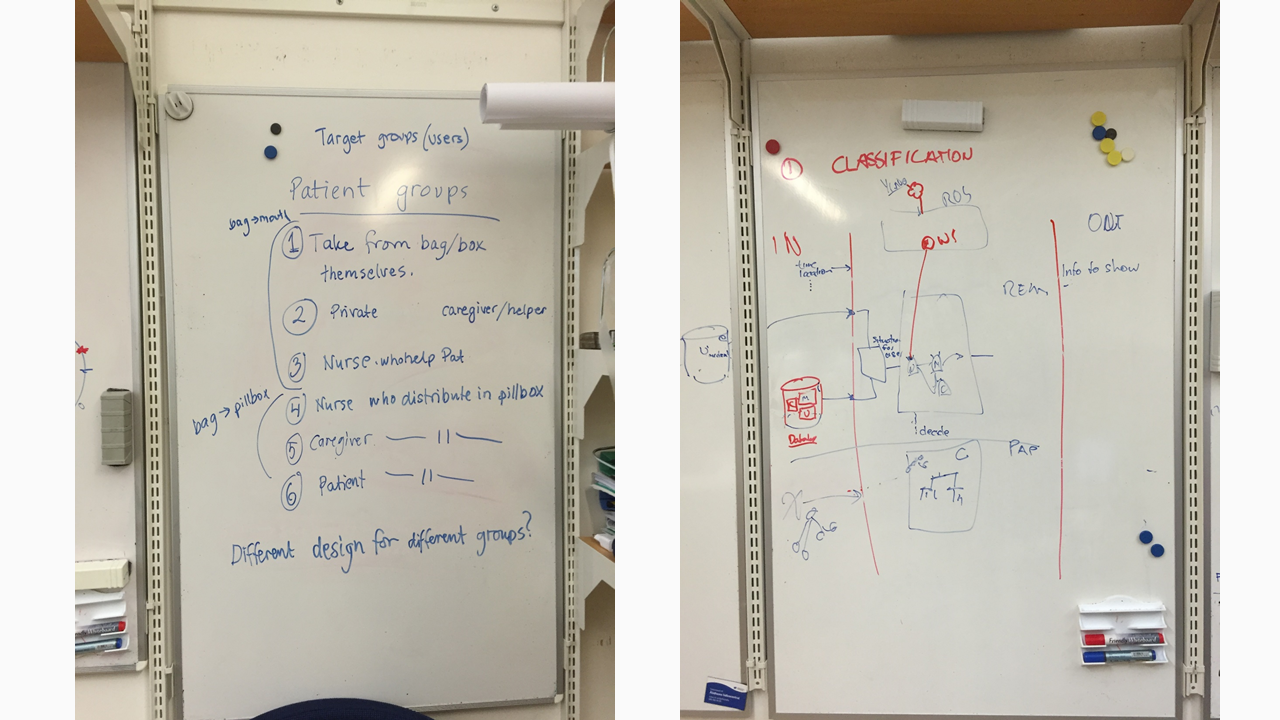
Interview and prototyping: Integrating interdisciplinary solution
I conducted interviews with older patients and care providers to help the team have a deeper understanding of the using scenarios and demands. A specific design of the system and device was proposed according to the inputs from the interviews. We used the concept of smart cabinet simulating the medication storage environment in home to design the device. The gesture and text recognitions, argument-based reasoning process, agent-based mechanism, and projection-based AR were used to construct the system.
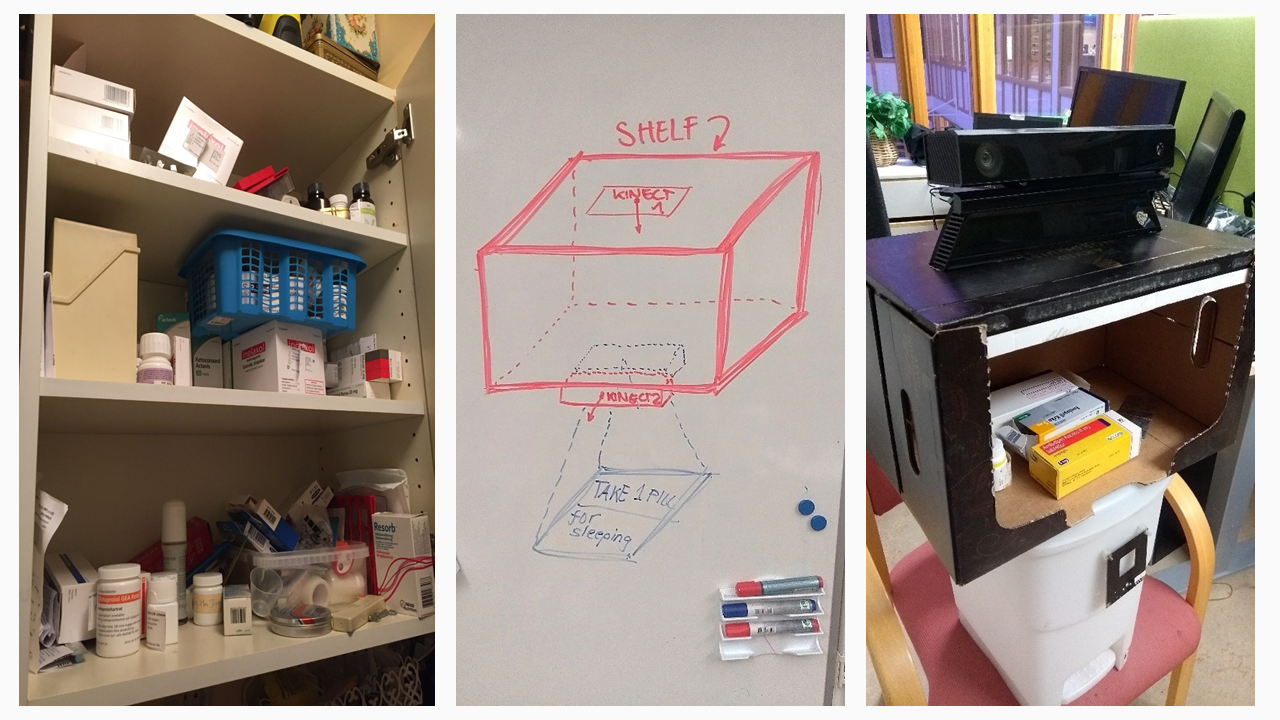
Usability evaluation
I conducted user tests to observe user behavior and evaluate their performance. I used task correctness, task time, the AAIMA (Assessment of Autonomy in Internet-Mediated Activity) protocol, the Raw NASA Task Load Index (RTLX) and the System Usability Scale (SUS) to evaluate the system usability. The follow-up interviews were also conducted to collect users’ suggestions.
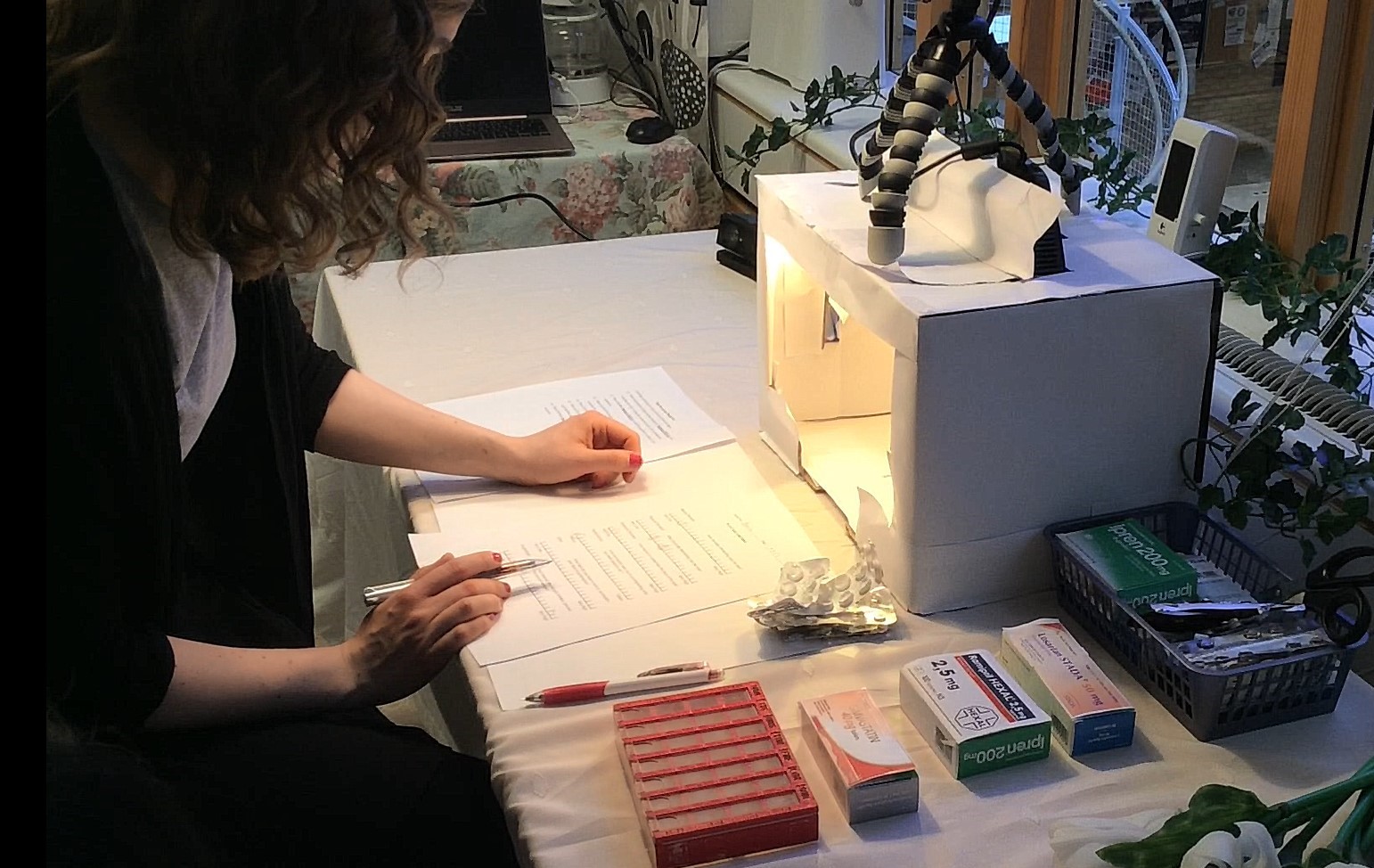
Detailed Design
Personalised support
Patients’ prescriptions were constructed in the database. The personal medication instructions information would be provided to the users by the system when the users started to distribute medications. Different languages of the medication instructions can be provides depending on users’ nations.
Transparent information with source information
The system reorganized the medication information layout. The users could understand the required information of medication distribution task at a glance. Afterwards, the abstracted information could easily assist the user to double-check their medication distributions.
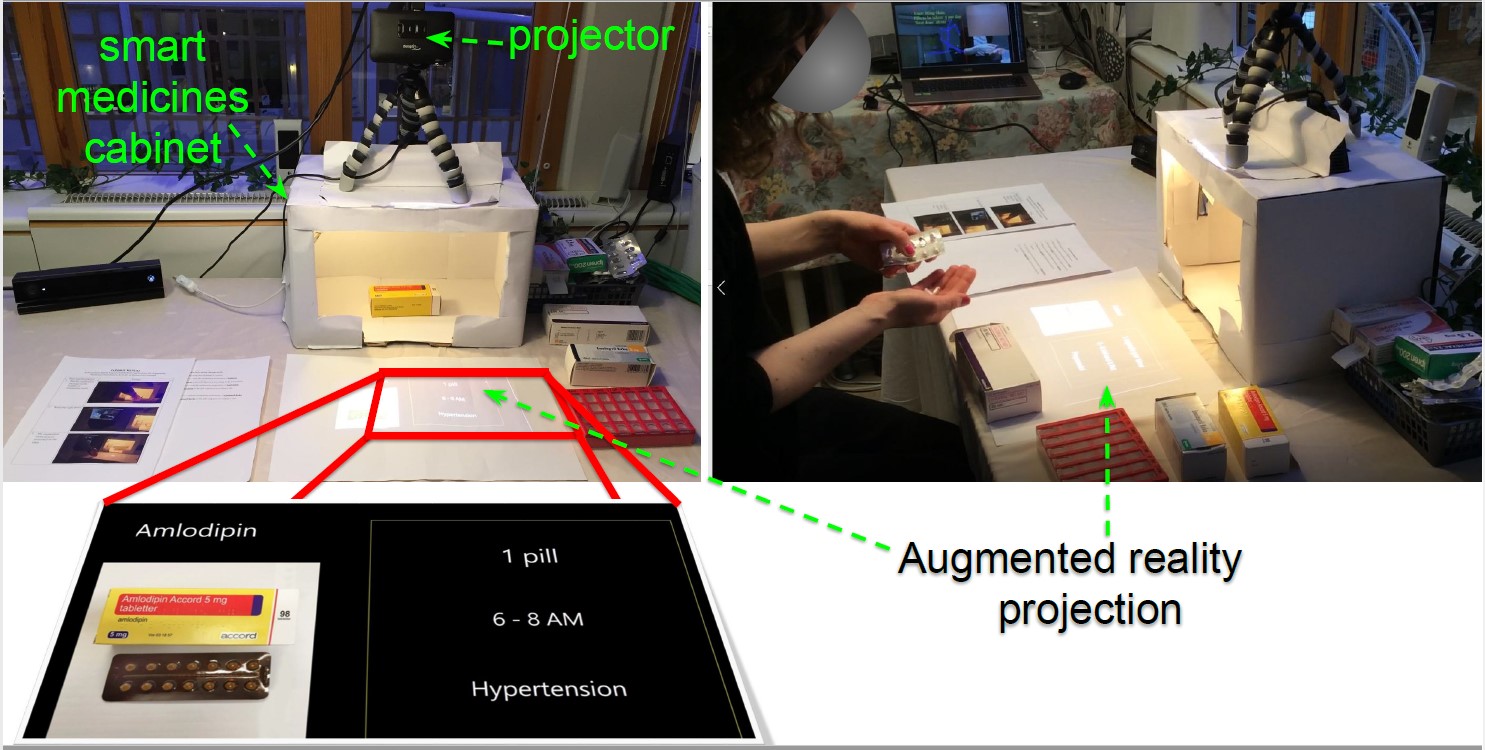
Coordination between human and IAS support
Four kinds of support levels were designed to provide adaptive supports for users.
- Independent activity execution
- Activities supported by caregiver
- Activities supported by an assistive system
- Activities supported by both caregiver and
agent
In this scenario, the user could perform medication distributing independently. The assistive system does not take any decisions oriented to support the activity. The role of an assistive system is observe and learn without suggesting active support.
In this scenario, an individual receives support from another person, for example a caregiver. Similarly to the last scenario, the role of an assistive system is observe and learn without suggesting active support.
In this scenario, an assistive agent takes the decision to support an individual by taking active decisions such as projecting the abstracted medication instructions.
This scenario involves the joint support provided the client by both a caregiver and an assistive system. A main challenge for the assistive system is to detect: (1) actions that the caregiver executes, and (2) observations of the caregiver and client.
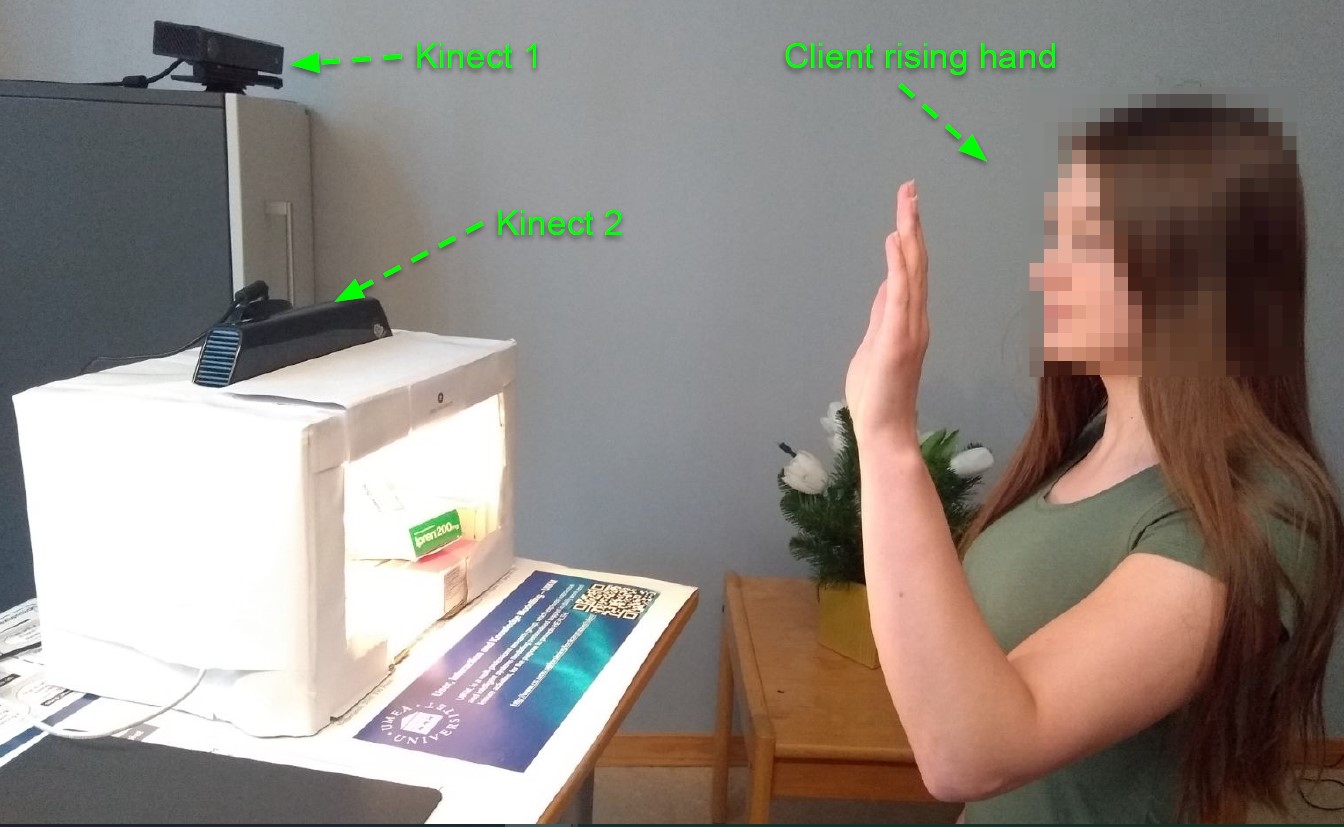
Impact
International impact
The project were presented at the Joint Workshop on Artificial Intelligence for Health in Stockholm in Sweden and published in the Journal of Cognitive Systems Research.

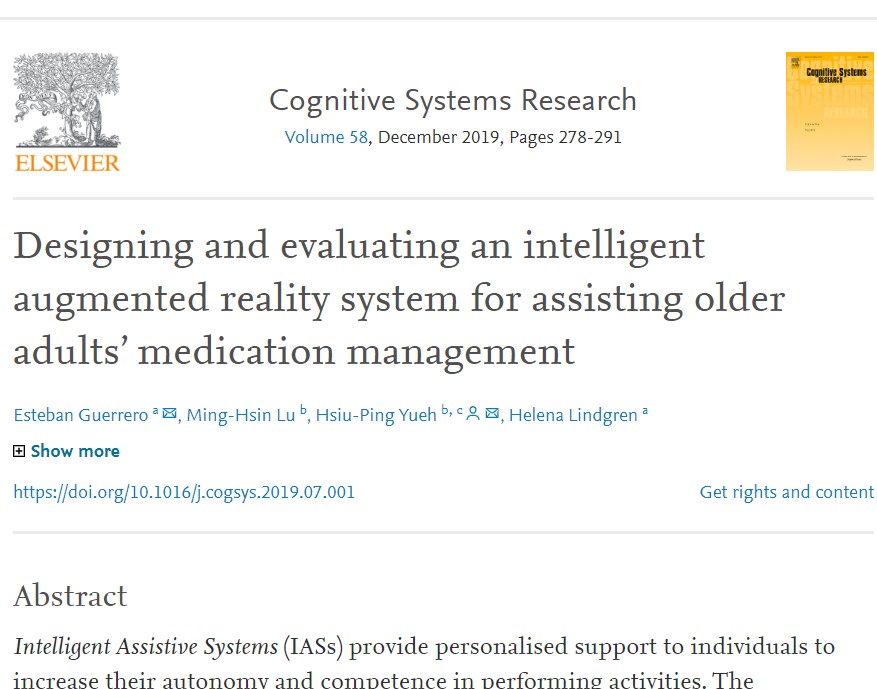
Satisfying design
“I think it was really good that it become a such big picture you can see very clearly. Because it is a problem that the text is small on the packages and there is a lot of the text on the package. So I think that is really clear. I also like the picture of the box and pills because the challenge is there are a lot of boxes with different names and the pills can be look different. It confirms that you have the right thing.”---The field expert in health care
“I like that the projected information is clear and helpful. I think older patients with taking lots of different medications need this system.” ---The elder participant of this project